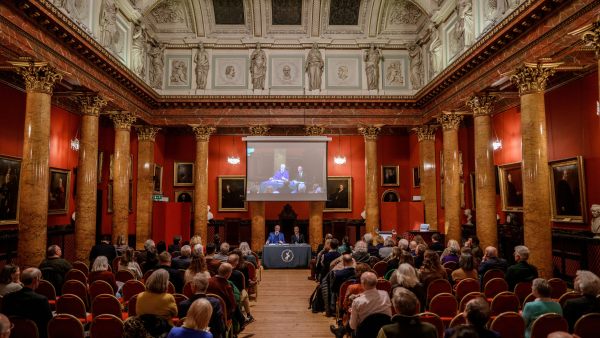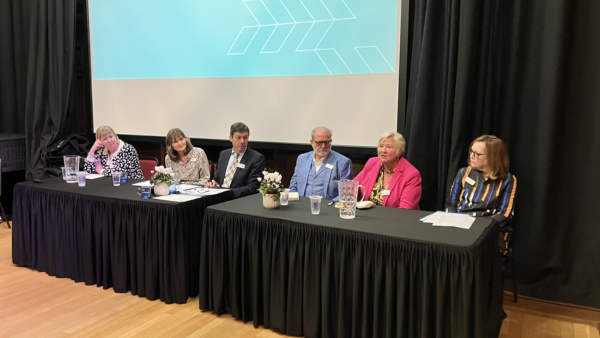Last week I shared some of the Society's early work encouraging the planting of trees. But there was another method adopted to conserve Britain's forests. Wood, baked into charcoal, was a key resource in the smelting of iron, with iron foundries often located in wooded areas for a ready supply. The wood shortage had raised the price of British iron, so that by the mid-eighteenth century Britain was heavily importing its iron from Sweden and Russia – yet another nightmare for those concerned with restricting imports and with national security.
The rising price of iron thus prompted a search for alternative fuels, the most promising being coal, baked into coke. The Society continued its efforts to promote tree-planting, given a fear that the coal seams might soon be exhausted, but premiums for coke-smelting iron were suggested to the Society in 1762 by John Wilkinson, perhaps one of the most celebrated metallurgists to be associated with the Industrial Revolution. Wilkinson had just become a member of the Society, and would later become one of the country’s predominant ironmasters, by 1796 producing an eighth of Britain's growing iron output. In the mid-1770s he also earned his place in the history of technology by developing a method of accurately boring the cylinders for steam engines, thus making James Watt’s famous engines viable. Wilkinson's obsession with iron became the stuff of legend, earning him the epithet “Iron Mad”: he was an original subscriber to the world’s first iron bridge, built the first iron boats, and even insisted that iron be used for his bed, desk, and coffin, which he displayed in his office in the belief that it would entice customers. A vast, cast-iron obelisk marking his eventual resting place may be found in the village of Lindale in Cumbria today.
John “Iron Mad” Wilkinson was among those who had tried for centuries to replace charcoal with coke. He was confident that Britain’s coal reserves would prove “inexhaustible”, but the main issue was with coke-smelted iron's quality. By 1762, when he suggested the premium, the best English iron smelted into “pig” ingots with coke was fit only for nails (the name “pigs” comes from the series of ingot moulds coming off the channel for the molten iron, which resembled a litter of piglets being suckled by their mother). Getting the quality of coke-smelted pig iron up to the same standard as that made with charcoal would save the most wood, and some more could also be saved in refining the pigs into “wrought” bars of higher quality. The Society would follow Wilkinson’s suggestion right up until the 1840s, offering substantial premiums for using coke to produce iron of ever-greater quality, although it isn't clear that they had much effect.
Nevertheless, Wilkinson's optimism that coal would provide an inexhaustible supply of fuel would eventually be vindicated. Britain’s coal by the 1820s provided fuel each year equivalent to 21 million acres of forest – an area larger than all of its agricultural land, more than eight times its forest, and even three times its forest today, after decades of reforestation. Partly because the burning of coal freed up the land for other uses, Britain’s forests have been allowed to recover to levels not seen since the fourteenth century. Little did they know of the eventual environmental trade-off.
Related news
-
Why 2025 is an exciting year to be an RSA Fellow
Fionna Monk
Happy New Year! 2025 is shaping up to be a landmark year for the RSA Fellowship, brimming with new opportunities, initiatives, and global collaborations. There’s never been a more exciting time to be part of this dynamic and engaging community. Here’s more on why this year promises to be an inspiring and impactful year for RSA Fellows worldwide.
-
The 2024 Angus Millar Lecture
Fionna Monk
The 2024 Angus Millar Lecture was led by award-winning novelist Andrew O’Hagan on the theme of 'Art, Literature and Truth in the Era of Fake News, Algorithms and Artificial Intelligence'.
-
Facing the future: Scotland's challenges
Fionna Monk
On 26 November 2024, RSA Scotland discussed Scotland’s future with nine engaging speakers addressing various challenges facing the country. The venue was resonant – a former committee room at the French Institute used in its early days by the Scottish Parliament. This successful event was chaired with deftness and humour by the former Presiding Officer at the Parliament, Rt Hon Ken Macintosh.



Join the discussion
Comments
Please login to post a comment or reply
Don't have an account? Click here to register.
Coke was being used to produce iron for quality consumer goods long before 1762. In the early 18th century iron was still made using charcoal as a fuel. As the demand for iron grew the forests were being depleted at a huge rate, requiring ironmakers to forage further and further afield to feed their furnaces. The price of charcoal was soaring and indeed the British Navy was concerned that it would not have enough oak trees to build its warships. Constructing a first rate ship-of-the-line required three thousand oaks, aged between 80 and 120 years. So wood was a strategic material! Thus iron was expensive and used mainly in bar form for nails, horseshoes, chains, door hardware and swords and muskets. No one knew how to cast it into thin-walled hollowware.In 1705 the Quaker Abraham Darby I (1678-1717) travelled to Holland to study the casting of pots and pans in brass. In England at that time pots and pans were imported from Holland, where the Dutch were masters of brass founding. These utensils were incredibly expensive, often being named specifically in wills so that they could be passed on as heirlooms. Perhaps this spurred Darby on, for in 1707 he patented a process for casting good quality bellied pots in iron. In combination with coke as a fuel, he now had all the ingredients to set up an iron production process in Coalbrookdale. Here he and his successors would construct one of the world’s first continuous production processes, with raw materials being fed in at one end and finished products flowing out of the other.